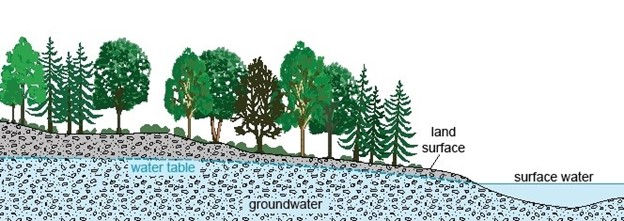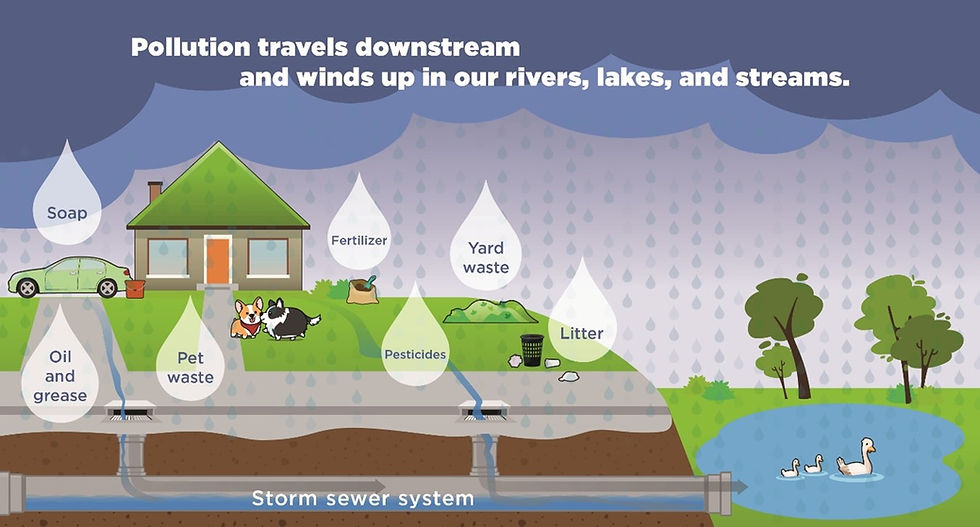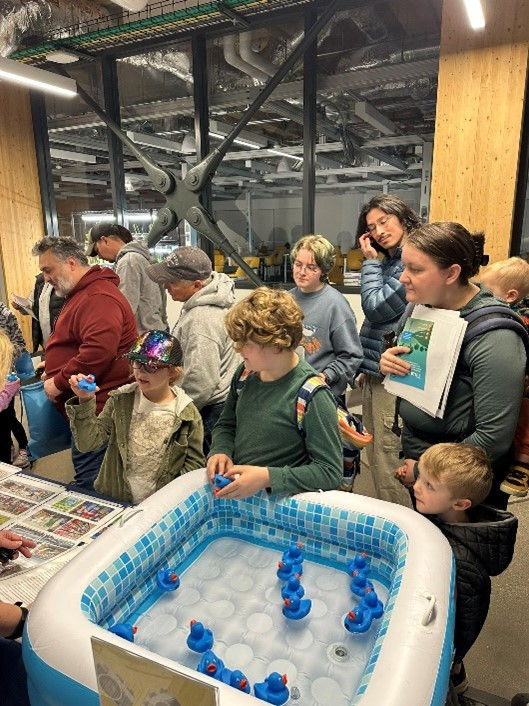Bring a Water Expert to Your Classroom!
- NEWS
- Sep 16
- 4 min read
Updated: Sep 25
Clean water is essential for our health and the well-being of our aquatic ecosystems. Michigan has the highest number of private household wells in the country and is home to over 76,000 miles of rivers and streams. Nonpoint source pollution, however, remains a constant threat to our water quality and is the leading cause of water pollution in the Great Lakes state. We must safeguard the groundwater that residents of Clinton, Eaton, and Ingham counties depend on exclusively for their drinking water, as well as the surface waters that provide critical habitat and support local economies.

That’s why the Tri-County Regional Planning Commission (Tri-County) plans for the region’s water future by making sure we have access to clean surface water, sustainable groundwater sources, and safe drinking water. It’s also why Tri-County oversees the regional Groundwater Management Board (GMB) and the Greater Lansing Regional Committee for Stormwater Management (GLRC).

Through both organizations, municipalities in the tri-county area work together to safeguard our water resources. GMB concentrates on the quality and quantity of groundwater, while GLRC aims to enhance watershed health by reducing pollution from stormwater runoff. Educating the public about the importance of protecting our watershed and how residents’ actions can impact water quality is crucial for both GMB and GLRC.
Lesson Plans
Staff from GMB and GLRC frequently participate in educational events and serve as guest speakers in classrooms. To broaden their outreach to local schools, lesson plans have been created to show how classroom instruction on protecting water resources aligns with Michigan Science Standards’ performance expectations. Each lesson plan details the objectives, standards addressed, estimated duration, required materials, learning outcomes, schedule, and out-of-class assignments.

As part of its efforts to address stormwater pollution, the GLRC has created lesson plans for grades 6-12 on “Nonpoint Source Pollution in Your Watershed” and “How Lucky Is Your Duck?" Staff are skilled at teaching these lessons, which cover topics such as how nonpoint source pollution affects the environment, the impact of stormwater runoff on aquatic ecosystems, and what individuals can do to help protect our waterways and prevent stormwater pollution.

Tri-County staff can also take the “Hooray for Native Trees” lesson into K-5 classrooms. This activity helps students learn where our rainwater ends up, how pollutants enter the Great Lakes, and how planting native trees creates habitat and helps protect our waterways. You can find all GLRC lesson plans, worksheets, and other educational resources at mywatersheds.org/educators.
To introduce groundwater protection into the classroom, the GMB has created two sets of lesson plans for middle school and high school students. Covering up to a week of activities, the seamless “Wellhead Wonders StoryMap” helps students in grades 2–4 learn how local groundwater resources are used, how water reaches their homes, and the vital role students play in protecting these resources. Tri-County staff are not required to complete the activities in this lesson plan. However, staff support is available either as a classroom professional or as a resource for the lesson plan.

For high school students, the “Groundwater is Our Drinking Water” activity is recommended for grades 9–12. It teaches students about groundwater, where our drinking water comes from, and what to do if you have a private well or public water for drinking. In addition to having Tri-County staff in the classroom, each visit aims to bring in experts from the field, including staff from a local water supplier and the Michigan Department of Health and Human Services.
In addition to offering classroom lesson plans, both the GLRC and GMB provide a wide variety of educational resources on their websites. From printouts to games and videos, make sure to visit mywatersheds.org/educators for all things stormwater and watershed protection, and check out the educational resource section on mitcrpc.org/migroundwater-resources for information on groundwater and drinking water.
Learn More and Visit Us in Person
Would you like to bring an Environmental Planner from Tri-County to your classroom? For the GLRC and its lesson plans, contact Amanda Hathaway Frattarelli at ahathawayfrattarelli@mitcrpc.org. For the GMB and their activities, reach out to Lauren Schnoebelen at lschnoebelen@mitcrpc.org.

Classrooms are one of many avenues both groups use to help promote water and environmental stewardship throughout the year. Many outreach materials serve as excellent resources and are available online and at several local library branches. The GMB and GLRC both regularly attend annual events during the spring season and throughout the summer.
Make sure to visit one of their tables at the MSU Science Festival or Potter Park Zoo’s Party for the Planet for child-focused educational opportunities. Several versions of the activities we offer in the lesson plans are on display for you to experience before taking them to your classrooms. Other events, such as the Quiet Adventures Symposium, provide ongoing education for all ages, with a primary focus on adult audiences. Here, many of our outreach materials are featured, and we answer all types of water questions from local community members.
As you plan your upcoming lessons or seek inspiration for new classroom activities, be sure to check out the Groundwater Management Board and the Greater Lansing Regional Committee for Stormwater Management to learn about all aspects of surface water and groundwater.

To help protect local communities, the Tri-County Regional Planning Commission plans for sustainable natural resources by facilitating the Groundwater Management Board and the Greater Lansing Regional Committee for Stormwater Management.

















Comments